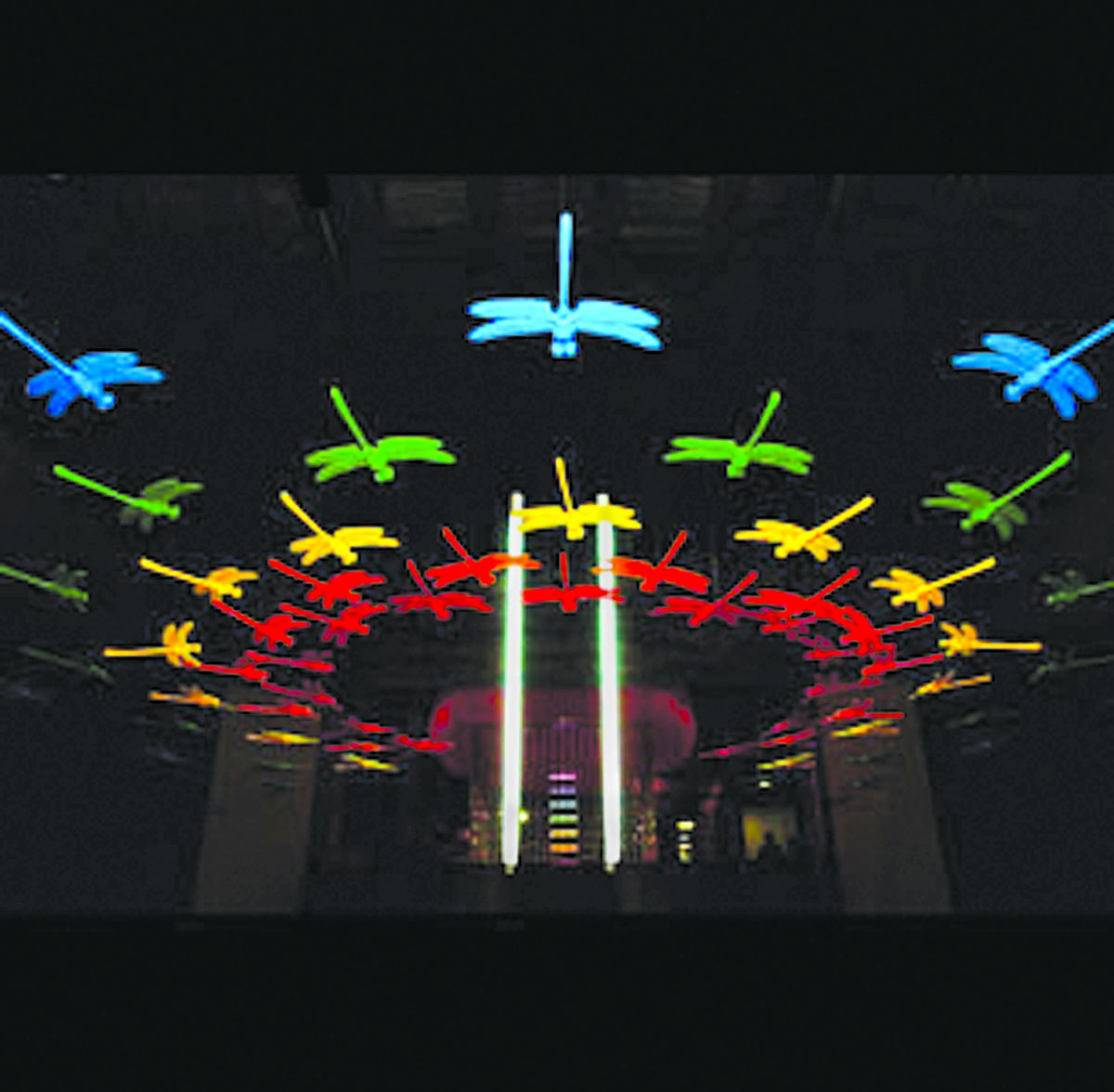
Berlin
Thinking Cypress
Villa Rose
September 11–November 30, 2005
Rebell Minds’ professed aim is “to create a space in which social barriers and limitations cease to exist and to provide a means of communication that will inspire and provoke people to speak their minds.” Under this ambitious rubric, their latest effort presents contemporary work from Iran in the three-part show ‘Thinking Cypress,’ whose title alludes to the metaphorical significance of cypresses as Persian heroes. Perhaps over-the-top romanticized, the “heroes” here are the young Iranian artists Shahab Fotouhi, Mahmoud Bakhshi Moakhar, and Arash Hanaei, who address socially volatile subjects and positions.
The first installation addresses the events of September 11, 2001. Fotouhi’s Toward Salvation, which intentionally opened on the four-year anniversary of the attack, is a poetic and soothing piece despite its obviously brutal subject matter. Two white neon tubes, symbolizing New York’s razed monuments to commerce, hang suspended and perpendicular to the floor in a darkened room. Surrounding their radiating beams are concentric circles of multicolored insects that fly directly toward the lights, transfixed and lured by their luminescent gleam. Just as the moth cannot deter its route despite its own imminent self-destruction, so these dragonflies — whose tubular form and extended wings recall an airplane — can do nothing but fly to their death.
Here, the radiance of the lights suggests the promise of paradise toward which the kamikazes believed they were flying. Deeply committed to their faith, they were unable to alter their course. Yet, by using insects as his pilots, Fotouhi makes a fundamental point: humans are not mindless creatures controlled by nature, for they have the benefit of reason and choice to change their position. He passes no clear judgment and seems to argue both sides, questioning a radical Islamist mentality as well as suggesting that the US may have turned itself into an irresistible target, either through diplomatic failure or a unstoppable arrogance — as manifest here in not so subtle fashion by the soaring tubes.
The second work is Moakhar’s sculpture The Great Middle East for George W. Bush, which probes issues of geography, nationality and ideology. The artist took an aluminum and Plexiglas case, usually used for shipping, and packed it with rows of national flags from Iraq, Iran, Libya, Palestine, Sudan, Syria and Lebanon. Their precise arrangement — seven of a one nation’s flag stacked in a column, with seven columns total — brings to mind a military parade, or perhaps a procession of flag-draped coffins of war victims. While the language of flag design is admittedly limited, the similarities in color and pattern remain particularly striking: almost all have horizontal red, green or black stripes flanking a white central band, bearing an insignia or a triangle. While this does seem to suggest a certain homogeneity of constructions of nationality, it might also be read as criticism of America’s wont to regard these countries as interchangeable, not separate, entities.
Stamped in a row on the transparent case are a series of pictograms signifying prevailing American foreign policy in the region, their very orderliness denoting the cookie-cutter nature of the American martial mission in the region. A bag of money alludes to its penchant for economic exploitation (most horrifically as a direct result of war); a radioactive symbol represents its arrogant and controlling attitude toward nuclear power; a scale represents the legal system, which is clearly unjust toward suspect incoming visitors; a plane, boat, and customs line refer to the limited ability of citizens of these countries — or any associated with an even vaguely Islamic background — to enter the “Land of the Free and the Home of the Brave.”
Finally, the last part of the exhibition — which will be hung alongside the previous installations (from November 3–30) — comprises a photographic series by Arash Hanaei titled ‘The Benefits of Vegetarianism.’ Hanaei reflects upon the damage inflicted upon his country during the Iran-Iraq war. Close-ups of burned and mutilated dolls indicate the war’s general torment but especially that inflicted on children, who suffered especially serious injuries. The limbless toys graphically symbolize the physical results of bombs and fires, and with them Hanaei questions the discrepancy between the celebrated ideals of the war and the ugly truths they concealed.
Although the worldview on show here is hardly cataclysmic, it may manage to defy some narrow-minded conceptions of the nature of expression in Iran; in the end, it’s not all that bad. Oddly enough, it appears that these artist/heroes did not require the sanctuary of Rebell Minds to speak their minds. They’re doing just fine on their own.